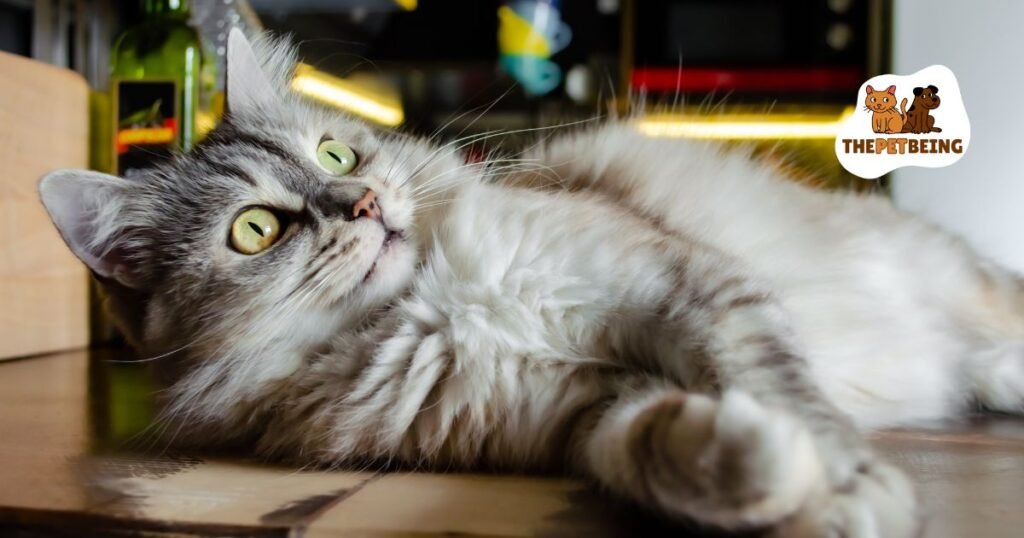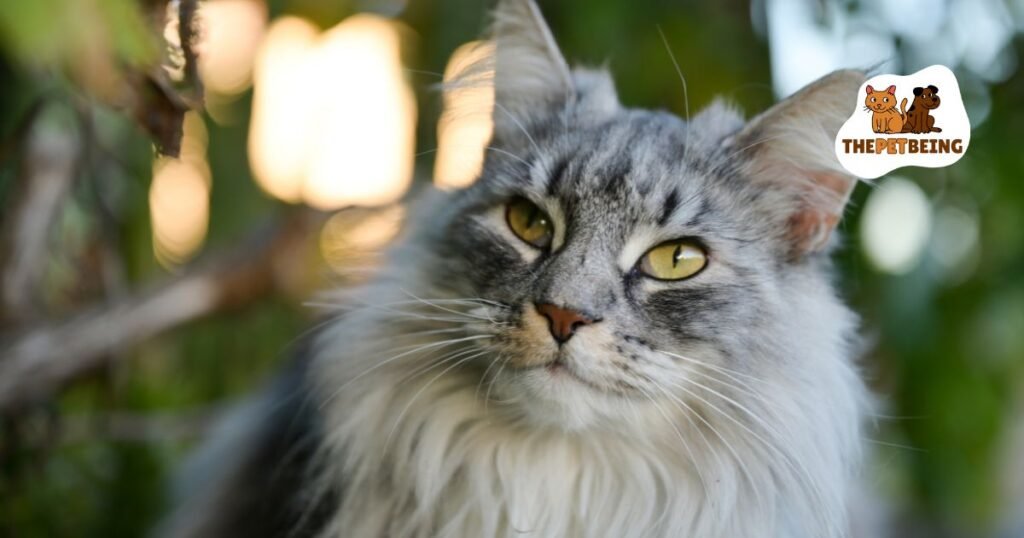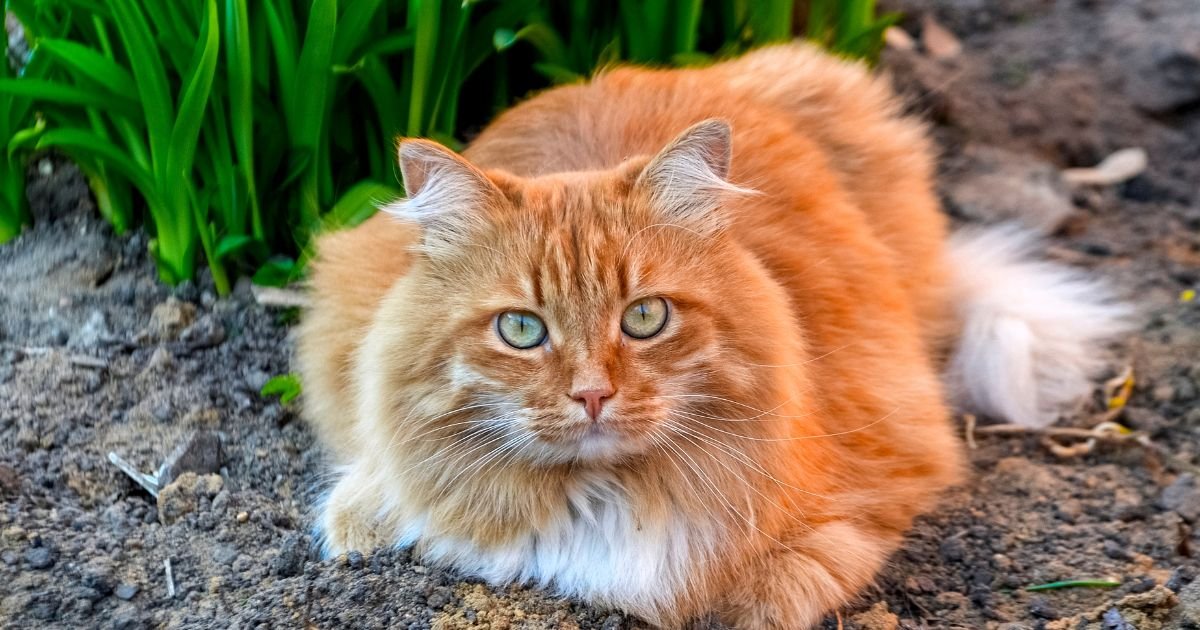How To Take Care Of A Long-Haired Cat? As their owner, you can take steps to contribute to your cats’ well-being beyond what they can do themselves:
- Please provide them with nutritious food.
- Gently brush your cat 1-2 times a week.
- Increase the frequency of brushing for long-haired cats.
- Limit baths to when necessary.
- Regularly check for knots or mats.
Long-haired cats can be beautiful and impressive. However, they need some special care to keep them looking good and healthy. With their regal appearance comes a need for regular grooming, proper nutrition, health assessments, lifestyle considerations, and other vital aspects of caring for these felines.
In this blog post, we will cover the basics of caring for your long-haired cat so that it has a comfortable life with you as its owner. With detailed advice from experts with years of experience with long-haired cats, you’ll learn invaluable tips on caring for your pet correctly. We’ll also recommend properly grooming a long-haired child so they remain happy, healthy, and looking their absolute best.
Ways To Take Care Of A Long-Haired Cat
Caring for a long-haired cat can be tricky, but don’t worry! We’re here to help you out.
This section shares simple and easy ways about “How To Take Care Of A Long Haired Cat.”
We will discuss grooming tips, diet advice, and other helpful care routines.
So, let’s dive in and explore how to provide the best care for your long-haired cat.

1. Brushing Your Cat’s Fur
Proper brushing is vital to keeping your long-haired cat’s fur smooth and shiny. Do this task daily.
Why daily? Long-haired cats’ fur can quickly tangle and become matted.
Using a gentle brush, start from its head and move down to its tail.
Be gentle. Don’t pull hard on knots.
Remember, a well-brushed cat is a happy and healthy cat!
2. Bathing
Bathing your long-haired cat is not always necessary, but it helps to keep the fur clean.
Cats can often clean themselves, but sometimes they need a little help from us.
When bathing, use a gentle cat shampoo.
Make sure the water is warm, not too hot or cold.
After the bath, dry your cat correctly with a towel.
Remember, never use a human hair dryer, as it can be too hot for them.
3. Providing Proper Nutrition
Feeding your long-haired cat right is essential.
They need a balanced diet for a healthy coat and body.
Give them high-quality cat food packed with proteins.
Also, include some wet food in their diet.
Remember, fresh water! Always see that your cat has clean water available.
Overweight cats can have health problems.
4. Regular Doctor Check-ups
Regular doctor visits are essential to your long-haired cat’s health.
Routine check-ups detect health issues early, keeping your cat healthy and happy.
Remember to vaccinate your cat and keep up with flea and worm treatments.
If your cat seems off, don’t wait.
Visit the doctor straight away. Your doctor is your partner in providing the best care for your furry friend.
5. Keeping Your Cat Hydrated
Hydration is essential for your long-haired cat.
Always make sure your kitty has access to clean water.
Refresh the water bowl every day to promote drinking.
Some cats love to drink moving water.
6. Providing Plenty of Exercise
Exercise is vital for your long-haired cat’s health and happiness.
Play with them daily using toys like laser pointers or feather teasers.
This helps them stay fit and burn energy.
A climbing tree or scratch post can also offer good exercise.
Regular playtime also keeps your cat’s mind sharp and helps avoid boredom.
Exercise is a fun way to bond with your cat, too.
7. Provide Enrichment and Playtime
Just like humans, cats need fun and entertainment tools.
Providing your long-haired cat with plenty of toys can make their life more joyful.
Balls, feather wands, and interactive toys can keep your cat busy and active.
Playtimes are beautiful opportunities for bonding, too! Remember to change the toys regularly to keep your cat interested.

8. Check for Skin Issues
Long-haired cats can have skin issues hidden beneath their fur.
Regularly check your cat’s skin for signs of redness, bumps, or parasites.
It could be a sign of fleas if you notice your cat scratching a lot.
Other issues like dandruff or bald spots could mean a skin condition.
If you see anything unusual, reach out to your doctor.
They can provide the necessary treatment to keep your cat comfortable and healthy.
9. Focus on Sensitive Areas
Sensitive areas like ears, eyes, and paws need special care in long-haired cats.
Clean your cat’s ears and eyes with a soft cloth to avoid infections.
Be careful not to touch the inner parts.
Check their paws regularly for any dirt or injuries.
Trim their claws carefully, but never cut the quick.
It’s painful for them. If you need more clarification, ask your doctor to show you how.
10. Address Mats and Tangles Carefully
Long-haired cats can get mats and tangles in their fur.
If you find one, don’t pull it.
If a mat is too big, your vet can help.
Taking care of mats and tangles helps keep your cat’s fur nice and smooth.
It also makes them feel more comfortable. Remember, a well-groomed cat is a happy cat!
Tips For Keeping Long-Haired Cats Cozy in Cold Weather
1. Keep Indoor Temperature Warm
Ensure your cat’s indoor temperature is warm and comfortable in the cold months.
You can use heaters, but keep the temperature cool.
Ensure the heat is evenly spread and not concentrated in one area.
2. Provide Cozy Bedding
Provide your long-haired cat with cozy and warm bedding.
A soft, plush bed can help your cat stay warm.
You can also use blankets that trap heat well.
Place the bed in a cozy corner away from drafts.
3. Use Cat Clothes
Using cat clothes can be beneficial in cold weather.
Choose soft, comfy sweaters or jackets specially designed for cats.
Make sure the clothing fits well, tight enough, and tight enough.
Dressing your long-haired cat can keep them warm and cozy during winter.

4. Regular Brushing
Regular brushing is essential during the cold months.
Brushing removes loose fur and helps distribute natural oils, keeping your cat’s coat healthy and shiny.
It also increases blood circulation, helping your cat stay warm.
Always brush gently to avoid hurting your cat.
5. Provide Warm Food
In cold weather, warm food can help keep your cat cozy.
Consider warming up their wet food slightly before serving.
Always check the temperature to ensure it’s not too hot.
How To Prevent Hairballs In Long-Haired Cats
Hairballs in long-haired cats can be a real problem.
They happen when your cat swallows hair while grooming.
That hair can then form a ball in their stomach.
So, how can we help our cats avoid this? Here are some easy steps you can follow.
First, brushing your cat often can help a lot. When you brush your cat, you remove the loose fur they might swallow.
Try brushing your cat daily, especially if they have long hair.
This can also be an excellent way to spend time with your cat.
Next, think about your cat’s diet.
There are special cat foods out there that can help with hairballs.
These foods often have more fiber, which can help your cat pass the hair through their body.
Asking your vet about these foods could be a good idea.
A third step is to give your cat grass or a hairball remedy.
Cat grass is a particular type of grass you can buy in pet stores.
It can help your cat pass hairballs.
Lastly, always make sure your cat has plenty of water.
Water helps keep everything moving in your cat’s body, including hairballs.
Always keep their water bowl full.
Just by doing these simple things, you can help your cat avoid hairballs. And this will make both you and your cat happier!
How To Choose The Right Food For LongHaired Cats
1. Choose High-Quality Protein Foods
Long-haired cats need food that is high in good-quality protein.
Protein helps in keeping their fur healthy and shiny.
Foods like chicken, fish, and beef are great options.
2. Pick Foods With Omega-3 and Omega-6
Omega-3 and Omega-6 are essential fatty acids for your cat’s fur and skin health.
Look for foods that have these listed in the ingredients.
3. Consider Hairball Control Foods
Long-haired cats can suffer from hairballs.
Some cat foods help control hairballs and can be suitable for your cat.
Always check with your vet before significant changes to your cat’s diet.
4. Choose Foods With Vitamins and Minerals
Vitamins and minerals help keep your long-haired cat healthy.
Look for foods that contain vitamins A, B, D, and E.
Also, minerals like zinc and copper can benefit your cat’s fur health.
5. Think About Your Cat’s Age and Health
Always choose food suitable for your cat’s age and health status.
Kittens, adults, and senior cats all have different nutritional needs.
Also, if your cat has any health problems, you should pick food that helps manage these issues.
Choosing the right food can help keep your long-haired cat’s fur beautiful and their health optimum!
Conclusion
How To Take Care Of A Long-Haired Cat? We will cover the basics of caring for your long-haired cat, so it has a comfortable life with you as its owner. Caring for a long-haired cat involves attention to grooming, diet, and overall health. Regular brushing is crucial to keep their fur shiny and tangle-free, while occasional baths are needed for a thorough clean. Remember the importance of regular nail trims and dental care to keep your furry friend comfortable and healthy. Hairballs can be a concern with long-haired cats. Fortunately, regular brushing and special diets can help manage this issue.
The selection of the proper grooming tools is essential, too. A soft-bristle brush, a wide-toothed comb for detangling, precise nail clippers, and a soft toothbrush are essentials.
FAQs
Are long-haired cats hard to take care of?
Long-haired cats need a bit more care compared to short-haired ones. This is mainly because of their long fur, which can get tangled or turn into hairballs. Regular brushing helps avoid these issues. They also need a specific diet for maintaining their hair and controlling hairballs. But, with love and care, a long-haired cat can be a joyful pet.
How do you take care of a long fur cat?
Taking care of a long fur cat involves a few simple steps. First, brush their fur regularly. This keeps it neat and free from tangles. Second, feed them good quality food. This helps keep their coat shiny and healthy. Third, give them plenty of clean water. This helps them stay hydrated and can also help with hairballs. Lastly, take them to the doctor for regular check-ups.
Do long-haired cats need haircuts?
While long-haired cats do not necessarily need haircuts, some owners choose to trim their cat’s fur to manage mats and keep them comfortable, especially in warmer weather. If the cat is calm and the owner is confident, they can use a fur trimmer.
What do long-haired cats eat?
Long-haired cats eat cat food that’s high in quality protein, like chicken, fish, or beef. Their diet should also include food with Omega-3 and Omega-6 for healthy fur and skin. Some cats need food that helps control hairballs. Choosing food with vitamins and minerals like vitamins A, B, D, E, zinc, and copper is also good. Always pick food that suits your cat’s age and health condition. Also, always provide clean water for their overall health.
What are the disadvantages of long-haired cats?
Long-haired cats are more challenging to care for. Their fur can get tangled, leading to uncomfortable mats. These cats can also have more hairballs because of their long hair. Additionally, they might need baths to keep their fur clean, but many cats do not like water. So, it can be a stressful process for them. Lastly, their fur might be trimmed to keep them comfortable, especially in hot weather. Despite these challenges, long-haired cats can make excellent pets with the proper care and grooming routine.
Do long-haired cats need baths?
Yes, long-haired cats may need baths, but not very often. Baths can help keep their fur clean and untangled. But remember, cats can get stressed in water. So, only give a tub when it’s needed. Always use warm water and cat-friendly shampoo. After the bath, dry your cat well and gently brush their fur. This helps to keep their coat nice and smooth.

